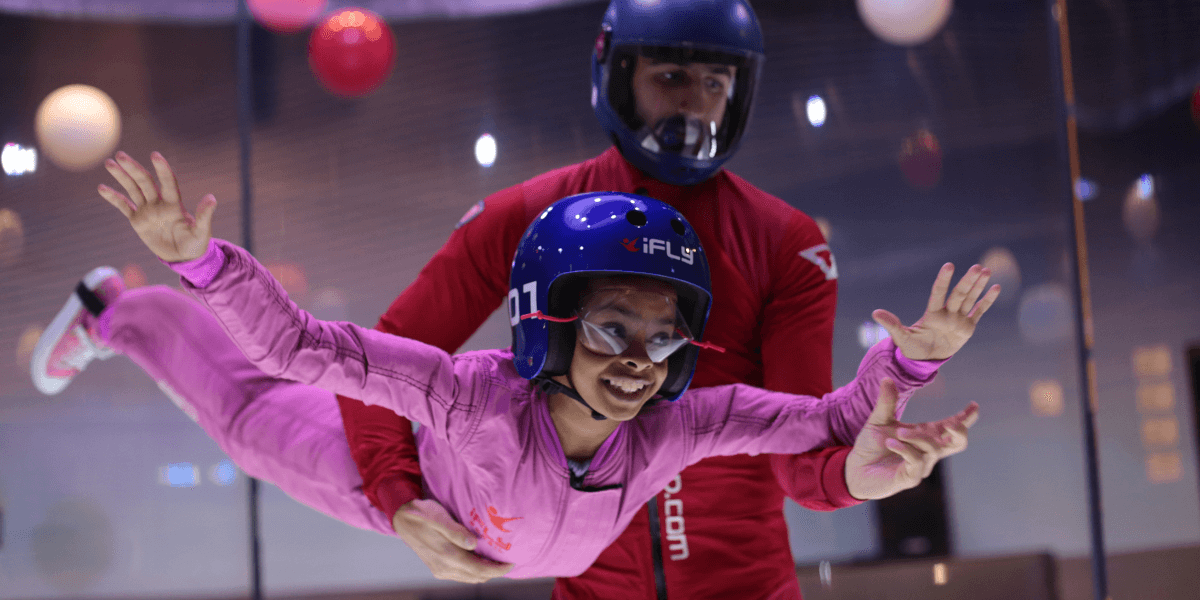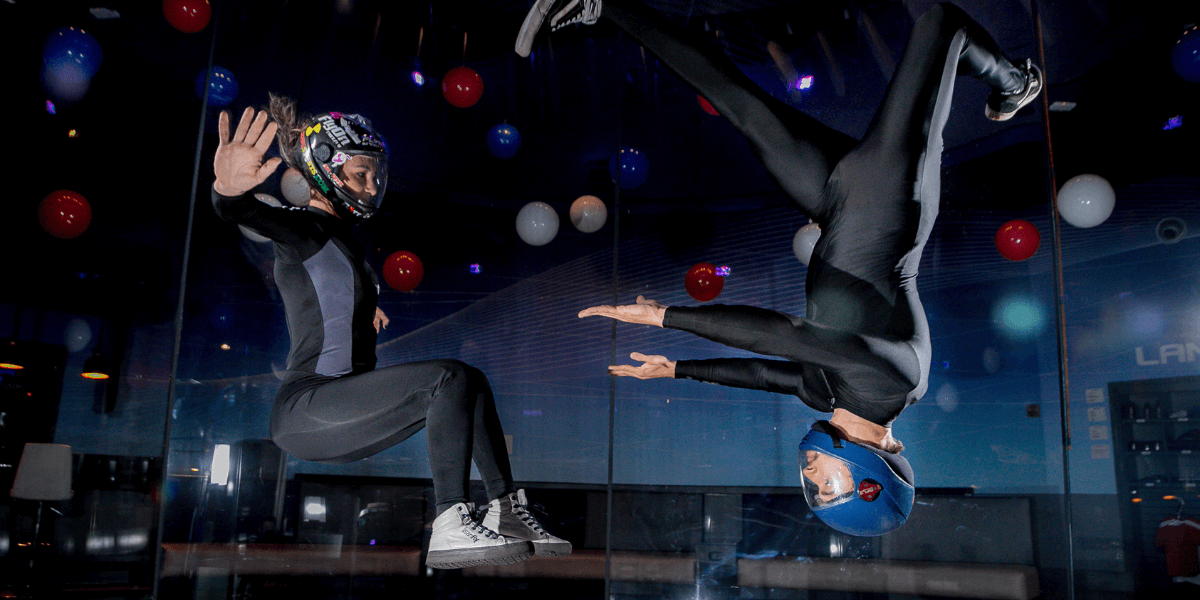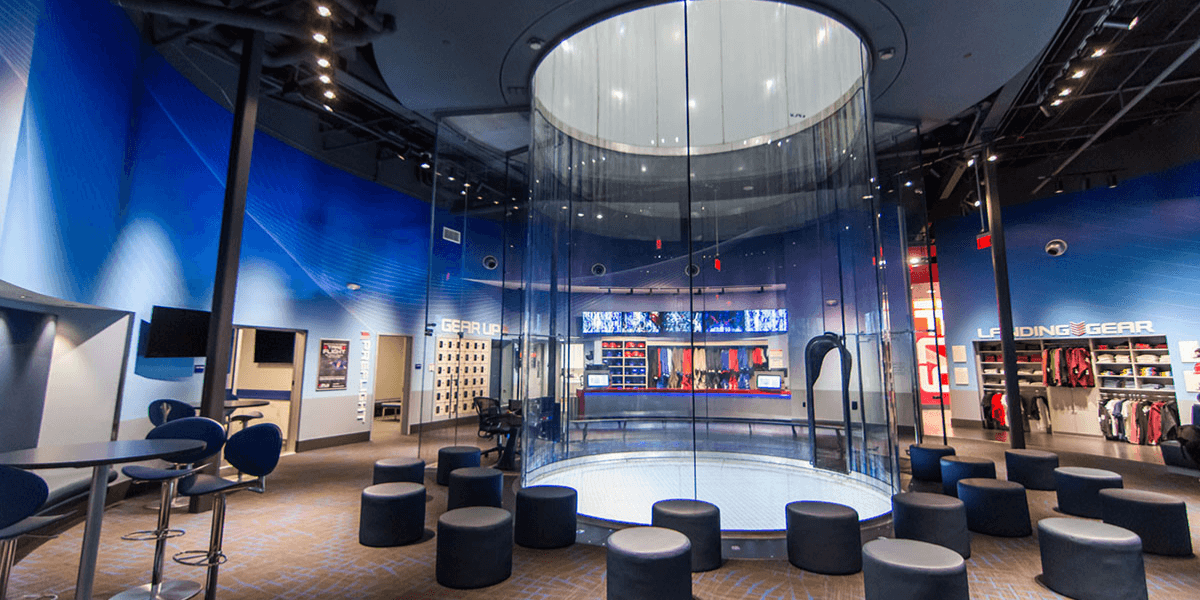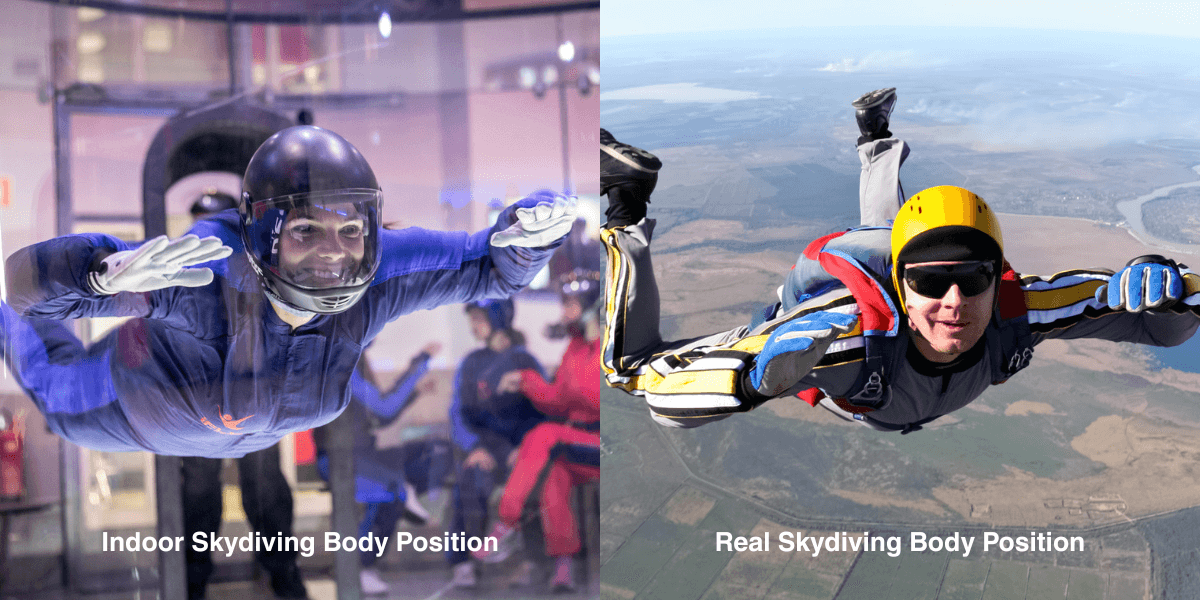
| Price: | $109 |
| Lowest Price Guarantee | |
| Price: | $94 |
| Lowest Price Guarantee | |
Not quite! Unlike a roller coaster, indoor skydiving doesn't involve sudden drops or jerky movements. Instead, it feels like floating on a cushion of air.


Typically, one person flies at a time with the instructor in the tunnel, though groups can take turns.
Those with serious back, neck, or heart conditions, recent injuries, or pregnant women should avoid flying. Always consult with a doctor if unsure.
| Guideline | Notes |
|---|---|
| 250 lbs+ | May require special accommodations |
| Up to ~300 lbs | Some locations have a strict 300 lb limit |
Weight limits vary, but generally, participants over 250 lbs may need special accommodations. Some locations have a strict limit of 300 lbs.
| Experience | Typical Cost |
|---|---|
| Outdoor tandem skydive | $200–$300 |
| Indoor iFLY session | $60–$100 |
Yes! Traditional outdoor skydiving can cost $200–$300 per jump, while indoor skydiving is typically $60–$100 per session.

Absolutely! Most iFLY locations have a viewing area where family and friends can watch you fly.
No, unlike roller coasters, there's no sudden drop. The wind gradually lifts you, so there's no stomach-dropping sensation.
| Minimum age | 3 years old (typically) |
| Upper age limit | No maximum |
Most iFLY locations allow flyers as young as 3 years old. There's no upper age limit!
| Condition | Wind speed |
|---|---|
| Typical freefall | ~120 mph |
| Advanced coaching | Up to ~160 mph |
The wind speeds in iFLY tunnels range from 120 to 160 mph, mimicking real freefall conditions.

It's very realistic—the sensation, body positioning, and wind speeds closely resemble the freefall phase of skydiving.
| Stage | Approx. time |
|---|---|
| Check-in & training | 20–30 min |
| Gear up | 10–15 min |
| Flight time (2×60s) | ~2 min airtime |
| Debrief / media | 10–15 min |
A typical session lasts about 1.5 hours, including training, gearing up, and flight time.
No, but the strong airflow can feel unusual at first. Relax, breathe normally, and keep your mouth closed to avoid excess air rushing in.